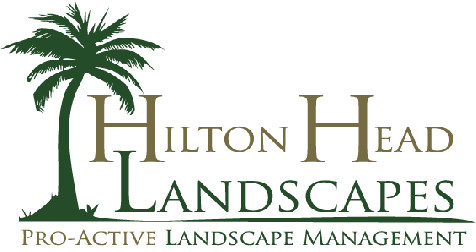Landscaping for Climate Resilience: Sustainable Solutions for Eco-Friendly Yards

Landscaping for Climate Resilience: Transform Your Outdoor Space with Sustainable Solutions
Creating a great landscape is more than just planting pretty flowers. Landscaping for climate resilience is about making sure your outdoor space can handle changes in the environment. This guide will help you understand how to design and maintain landscapes that not only look good but also work well with nature.
You can create a landscape that is beautiful and strong enough to face the changes in our climate.
Key Takeaways
- Climate resilience means preparing your landscape to adapt to climate changes.
- Using native plants is a smart choice. They need less water and care, and they support local wildlife.
- Smart landscaping can help manage stormwater, reduce heat, and keep your home cool.
- Regular maintenance is key to keeping your landscape healthy and resilient.
For more insights on sustainable landscape practices, check out our guide on eco-friendly gardening techniques.
What is Climate Resilience in Landscaping?
Climate resilience in landscaping means creating spaces that can adapt to changing weather. These changes might include more rain, drought, or heat waves. A resilient landscape can survive and thrive in these conditions. It uses plants and materials that work well in the local environment.
In Hilton Head Island, South Carolina, this means looking at the local climate. The area is known for its warm temperatures and unique wildlife. When you choose plants and design your yard, think about how they will react to these conditions.
Why is Landscaping for Climate Resilience Important?
Landscaping for climate resilience matters because it helps protect our homes and the environment. Resilient landscapes can:
- Reduce Flooding: Good landscaping can help manage stormwater. It can guide rainwater to where it is needed rather than letting it run off and cause flooding.
- Save Water: Using native plants means less watering. These plants are used to our local climate and need less care.
- Provide Wildlife Habitat: A resilient landscape can attract birds, butterflies, and other wildlife. This helps keep our local ecosystem healthy.
- Lower Energy Costs: Smart landscaping can reduce heat around your home. Trees and plants provide shade, which can lower cooling costs in the summer.
Benefits of Climate Resilient Landscaping
Benefit Description
- Environmental Protection Helps preserve local ecosystems by supporting native wildlife.
- Increased Property Value Well-designed landscapes can enhance property appeal and value.
- Reduced Maintenance Costs Native plants and sustainable practices often require less upkeep.
- Improved Air Quality Plants improve air quality by absorbing pollutants and producing oxygen.
Choosing the Right Plants for Your Landscape
When picking plants for your landscape, think about your local environment. Native plants are a great choice. They thrive in local conditions and need less care. Here are some popular native plants for Hilton Head Island:
Native Plants for Hilton Head Island
- Saw Palmetto: This hardy plant is great for sandy soil and needs little water.
- Coastal Rosemary: This plant is drought-tolerant and offers beautiful flowers.
- Beach Sunflower: This bright flower attracts butterflies and grows well in sandy areas.
- Loblolly Pine: A strong tree that provides shade and supports local wildlife.
Benefits of Using Native Plants
- Less Water: Native plants are adapted to local conditions, so they need less watering once established.
- Lower Maintenance: They require less care, which saves you time and money.
- Supports Wildlife: These plants provide food and shelter for local animals, making your landscape a haven for nature.
Additional Considerations for Plant Selection
- Choose plants that can withstand extreme weather conditions, such as drought or heavy rainfall.
- Consider the growth habits of plants to avoid overcrowding and competition for resources.
- Look for plants that can improve soil health, such as nitrogen-fixing species.
Designing Your Landscape for Resilience
Designing a resilient landscape takes planning. Here are some tips to help you get started:
1. Plan for Water Management
Think about how rainwater will flow through your yard. Use features like:
- Rain Gardens: These areas can collect rainwater and help it soak into the ground. They can be filled with native plants that thrive in wet conditions.
- Permeable Paving: Use materials that allow water to pass through. This helps reduce runoff and encourages water to soak into the ground.
2. Use Trees Wisely
Trees can provide shade and lower temperatures around your home. When planting trees, consider:
- Placement: Make sure trees are planted on the east and west sides of your home. This will help block the sun and keep your house cool.
- Type of Trees: Choose native trees that are strong and healthy in your area.
3. Create Windbreaks
Strong winds can harm your landscape. Planting trees and shrubs in a line can create a windbreak. This helps protect your home and plants.
For further information on selecting the ideal trees for your landscape, visit our page on local tree species.
Hardscaping for Climate Resilience
Hardscaping refers to the non-plant elements in your landscape, like paths, patios, and walls. Here are ways to make hardscaping work for climate resilience:
1. Use Sustainable Materials
Choose materials that are durable and good for the environment. For example:
- Recycled Materials: Use bricks or stones made from recycled products.
- Local Stone: This reduces transportation costs and supports local businesses.
2. Create Natural Pathways
Instead of solid concrete paths, consider using gravel or permeable pavers. This allows water to soak into the ground, helping to avoid flooding.
3. Install Retaining Walls
If your landscape has slopes, retaining walls can help control erosion. These walls can also create flat areas for planting and gathering.
Importance of Irrigation in Resilient Landscaping
Irrigation is vital for keeping your landscape healthy. Here’s how to ensure your irrigation is effective:
1. Smart Irrigation Systems
Use smart technology that adjusts watering based on weather conditions. This prevents overwatering and saves water.
2. Drip Irrigation
This method delivers water directly to the roots of plants. It reduces water waste and keeps plants healthy.
3. Rain Barrels
Collect rainwater from your roof. This water can be used to irrigate your garden, reducing your need for municipal water.
Regular Maintenance for a Resilient Landscape
To keep your landscape thriving, regular maintenance is essential. Here are a few tasks to keep in mind:
1. Mulching
Adding a layer of mulch around your plants helps retain moisture, prevents weeds, and adds nutrients to the soil.
2. Pruning
Keep your plants healthy by regularly trimming them. This encourages growth and helps prevent diseases.
3. Monitoring for Pests
Keep an eye out for pests that can harm your plants. Use natural methods to control pests whenever possible.
Maintenance Checklist for Resilient Landscaping
Task Frequency Purpose
- Mulching Once a year Retain moisture and suppress weeds
- Pruning Biannually Encourage growth and prevent disease
- Pest Monitoring Monthly Identify and manage infestations
The Role of Community in Climate Resilience
Creating a resilient landscape is not just about individual efforts. It’s also about the community. Here are ways to get involved:
1. Community Gardens
Join or start a community garden. This allows you to share resources and knowledge with others.
2. Educational Workshops
Attend workshops that teach sustainable landscaping practices. This can help everyone in your community improve their outdoor spaces.
3. Local Plant Sales
Support local nurseries that offer native plants. This helps promote the use of plants that are good for the environment.
Conclusion
Landscaping for climate resilience is a smart way to protect your home and the environment. By using native plants, planning for water management, and maintaining your landscape, you create a beautiful outdoor space that can withstand changes in climate. Remember, every little effort counts. Together, we can work towards a greener, more resilient Hilton Head Island.
In your journey to create a climate-resilient landscape, consider how each choice you make can help support your home and the environment. From the plants you select to the way you manage water, every step is important. Make your landscape a reflection of your values and a sanctuary for nature.
Contact Us
Ready to transform your outdoor space? At Hilton Head Landscapes, we can help you design and maintain a landscape that is beautiful and resilient. Call us at (843) 681-2889 to schedule your free consultation today. Let’s make your dream landscape a reality together!



